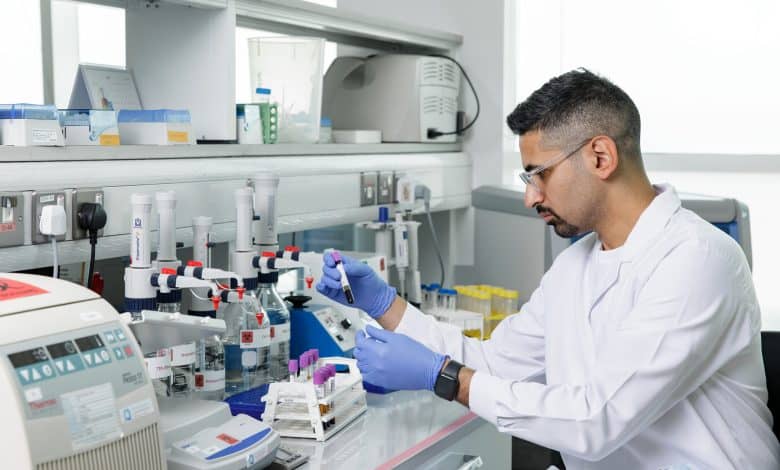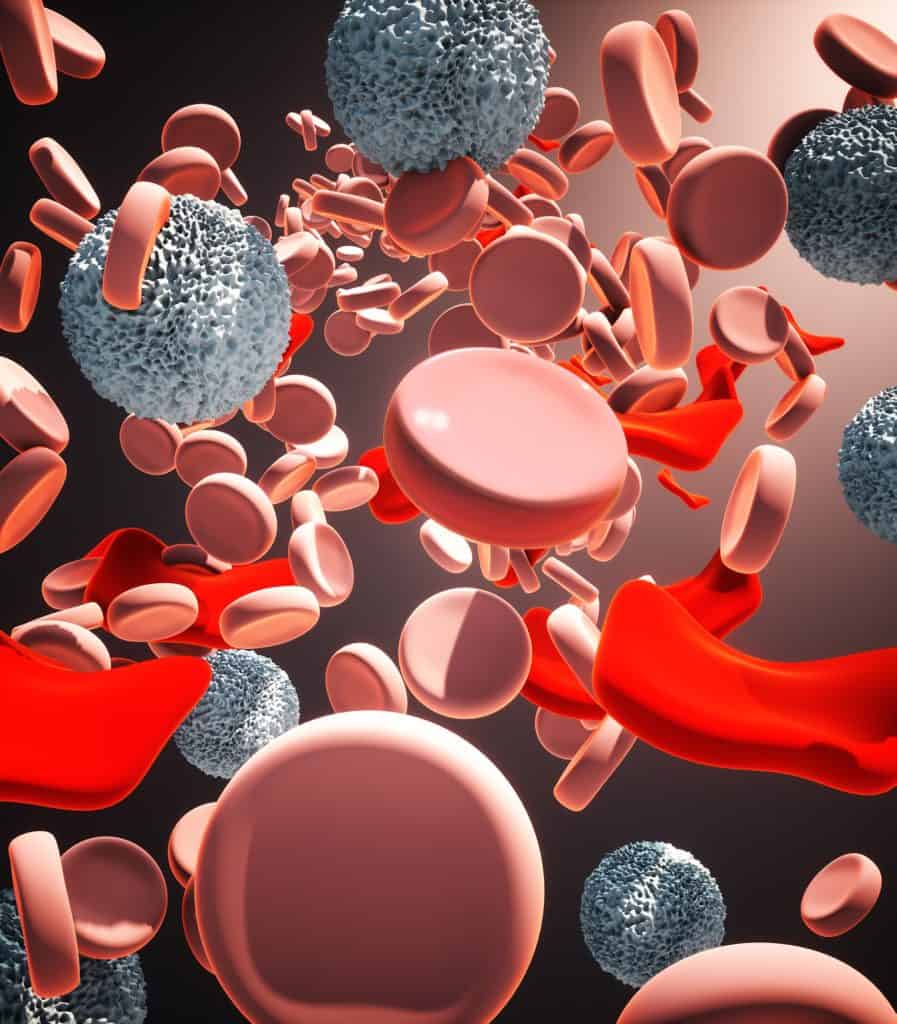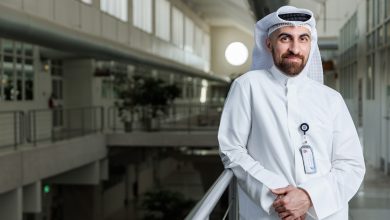Hamad Yaseen: Continuous Efforts to Diagnose and Treat Polycystic Kidney

A normal kidney is about the size of a human fist. A pair of these bean-shaped organs sit at the left and right of the back underneath the ribcage. But with Autosomal Dominant Polycystic Kidney Disease (ADPKD) they can grow as large as honeydew melons and weigh over 13 kilograms each.
This is because the disease causes cysts to grow on the organs. Sometimes, thousands of these fluid-filled, blister-like sacs cluster on the kidneys, ranging from pencil-point size to bigger than a pomegranate. Over time, “they affect the healthy tissue in the kidney and its filtration capability,” said Hamad Ali Yaseen, an associate professor of genomic medicine at Kuwait University and a research associate at Dasman Diabetes Institute.
Estimates vary, but this painful condition seems to affect one in every 800 to 1000 people. “ADPKD is the most common genetic kidney disease,” said Yaseen, whose close relatives and friends are affected by this hereditary condition. “Some have to undergo kidney transplants.”
This has motivated Yaseen to research the disease to fight it. Recently, he helped to bring the field a big step forward. With funding from the Kuwait Foundation for the Advancement of Sciences (KFAS), he participated in a global scientific collaboration that uncovered the third most common genetic cause behind ADPKD, potentially saving more people in Kuwait and worldwide from its threat of renal failure.
Yaseen, who is also the secretary general of the Kuwait Society for Organ Transplantation, studied molecular genetics at Ohio State University in the United States and earned his master’s degree and doctorate at the University of Newcastle, UK. To untangle the molecular mysteries of chronic kidney disease, he collaborates with researchers and clinicians in Europe and the U.S.
Polycystic Kidney Disease has two forms; a dominant common type and a recessive less common type. With the dominant form, if a mother or father carries the malfunctioning mutation, “the child has a 50 percent chance of getting the disease,” said Yaseen. Rarely, a child might also develop ADPKD through a spontaneous genetic mutation, with neither parent being a carrier.
But many of the estimated four to seven million sufferers worldwide might not realize that they have the condition, particularly in their younger years. “The disease course is highly variable, ranging from early renal insufficiency in [their] 20s, to the maintenance of normal renal function into the 7th decade of life,” said Yaseen. Often, symptoms only develop in a patient’s 20s to 30s.
The first indication is generally hypertension. Many patients also complain about chronic pain in their flank and other health complications might also show up. ADPKD sufferers have about five times the normal risk to get aneurysms in the brain – balloon-like bulges in blood vessels that can rupture, often fatally. They might develop less severe cysts on their liver or floppy heart valves in a condition called mitral valve prolapse, where the valve that separates the chambers of the heart doesn’t close properly, causing a fluttering or pounding in the chest.
Once the cysts start interfering with the kidneys’ ability to filter waste products from the body via the urine, toxic levels of them can build up causing a condition called uremia. When that happens, a patient enters end-stage renal disease or kidney failure. To stay alive, they must undergo regular dialysis or get a transplant – “if there’s one available,” said Yaseen. On average, patients with ADPKD develop kidney failure in their 50s, some might get there earlier.
Doctors had been aware of two major genes, called PKD1 and PKD2, that cause a vast majority of ADPKD cases. They also knew of some other but rare genetic anomalies.
But for about one fifth of patients, it wasn’t known what caused the disease. “They are genetically unresolved,” said Yaseen. “It meant that we couldn’t offer them any information about their prognosis or severity.” Or give them the option to ensure that any children of theirs would be spared, by conceiving through in-vitro fertilization and screening the embryos before implantation.
“They can select an embryo that doesn’t carry the mutation,” Yaseen said. “But if you don’t know the mutation, you can’t offer this.”
Yaseen and collaborators in eight countries screened hundreds of unresolved cases and discovered a causative link between mutations in the IFT140 gene and ADPKD making it its third-leading genetic cause. The team, led by researcher Peter Harris from the Mayo Clinic provided extensive clinical analysis of this subset of patients. Luckily, the newly discovered genetic cause seems to cause smaller cysts, making it one of ADPKD’s less severe forms.

Collaboration was one of Yaseen’s strengths, according to Fahd Al-Mulla, Chief Scientific Officer at the Dasman Diabetes Institute. “You need humility to be a successful scientist like he is,” Al-Mulla said. “Polycystic kidney disease is very heterogeneous. Some people have few cysts, others hundreds. There was a need to understand it on a global level, and this is where Yaseen is taking things.”
The genetic mutations behind ADPKD seem to corrupt proteins that help regulate the cells that form blood vessels and the one million filters and tubules in each kidney. The disease is usually diagnosed by ultrasound and other imaging techniques but, so far, there is no cure. All doctors can do is treat the hypertension that accompanies ADKPD and advise patients to keep a healthy weight, exercise, avoid smoking, and eat a low-salt diet with plenty of fluids, which might slow the growth of the cysts. A new medication, called tolvaptan, was recently approved in some countries and seems to somewhat delay the kidneys’ decline.
With funding from KFAS, Yaseen produced a genetic map of polycystic kidney disease in Kuwait to see which mutations are most prevalent in the Kuwaiti population and how that relates to the severity of the disease. The researcher also explored if substances in the urine can serve as “biomarkers” – early warning signs that a patient’s kidneys are starting to decline. This work, too, has been supported by KFAS. The genetic landscape of ADPKD in Kuwait has not been explored previously. As a small country with an average household size of seven people, Kuwait could provide valuable genetic insight about ADPKD including intrafamilial phenotypic variation. A report, published by Yaseen, comprehensively described the genetic landscape of ADPKD in Kuwait in the Clinical Kidney Journal, the official journal of the European renal association.
The observed genetic hetero-geneity of ADPKD along with the wide phenotypic spectrum reveal the level of complexity in disease pathophysiology, according to Yaseen. ADPKD genetic testing could improve care of patients through improving disease prognostication, guide treatment, support clinical trials, and aid genetic counselling.
Eventually, gene editing might provide a cure for the millions of ADPKD sufferers. “It could be a good candidate since it’s affected by a single gene,” said Yaseen. And partly thanks to his work, the genetic engineers of the future will know exactly which genes to target.
Ute Eberle




